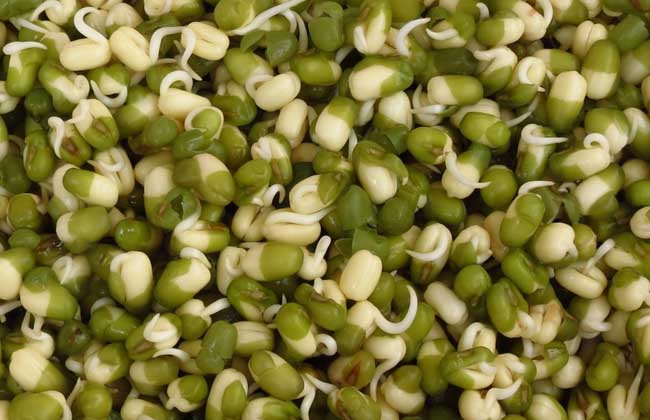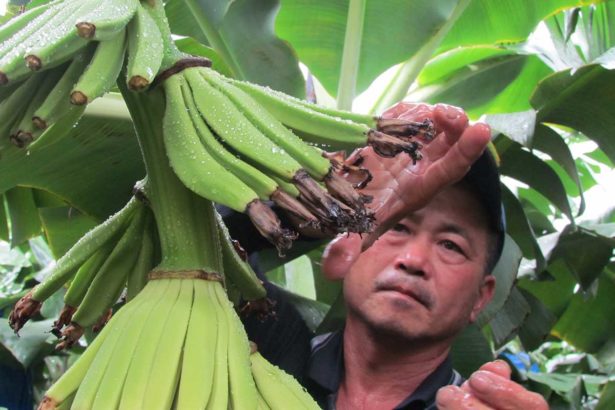High-yield cultivation techniques of mung bean

Mung bean is an annual upright herb of the genus Leguminosae, which is widely planted in East Asia and a small amount in Africa, Europe and the United States. Because of its short growth period, strong adaptability and fast growth at seedling stage, mung bean is suitable for intercropping with all kinds of dry crops in hilly areas. It can also be mixed with tall stalk crops such as corn and sorghum. Let's take a look at the high-yield cultivation techniques of mung bean.
Land selection and preparation
1. Land selection and stubble arrangement: mung bean has strong adaptability, such as sandy soil, hillside thin land, black soil and clay. It is often intercropped with corn, sorghum, cotton, sweet potato, sesame, millet and other crops, and can also be planted in ridges and interstitial fields. Avoid continuous cropping, because continuous cropping has many diseases and insect pests, poor quality, and inhibit the development of rhizobium because of the reproduction of harmful microorganisms. At the same time, mung bean is also an important fertile crop and an excellent predecessor of cereals. Therefore, to grow mung bean, it is necessary to arrange the land reasonably and carry out crop rotation, preferably with cereal crops such as corn, sorghum and wheat, and should not take Chinese cabbage as the previous stubble, generally 2-3 years apart.
2. Soil preparation and soil moisture conservation: mung bean is a dicotyledon crop, cotyledons are unearthed, and the top soil capacity of seedlings is weak. If the soil is hardened or there are too many bumps, it is easy to cause lack of seedlings, broken ridges or uneven emergence. Therefore, before sowing, it is required to deep plough fine rake, fine soil preparation, rake flat soil bumps, make the soil loose, store water and preserve soil moisture, prevent soil consolidation, virtual and solid, in order to facilitate seedling rotation and stubble.
Sowing at the right time
1. Select improved varieties: select varieties with large grains, thin skin, low hard seed rate, easy to cook and soft, taste and high yield. The main varieties are Bailu 522, Bailu 6 and Bailu 8. Zhonglu No. 1 and Zhonglu No. 2 in Asian vegetable Center, Jilin Jilu 9346, Gonglu No. 1 and Gonglu No. 2 in Jilin Province, these varieties generally increase production by more than 40% compared with farm varieties.
2. Sowing at the right time: mung beans can be sowed in spring and summer. Spring sowing is from late April to early and mid-May. Summer sowing is in mid-and late June, so we should strive to sow early. Mung bean likes temperature, and the suitable temperature for emergence and growth is 15 to 18 degrees Celsius, and a higher temperature is needed during the growth period. It begins to sprout at 8 to 12 degrees. The most suitable temperature during flowering and podding is between 18 and 20 degrees Celsius. If the temperature is too high, the stems and leaves will grow too vigorously, which will affect the flowering and podding. Mung bean is not tolerant to frost in the later growth stage. When the temperature drops below 0 ℃, the plants will freeze to death and the germination rate of seeds will be low. Therefore, mung bean sowing in summer and autumn must pay attention to timely and early sowing in order to mature normally before the advent of low temperature and early frost. The sowing rate per mu is generally 1.5-2.0 kg, and the sowing depth is 3.0-5.0 cm.
3. Reasonable close planting: the planting density of mung bean should be determined according to the characteristics of varieties and soil fertility. In general, we should master the principles of dense early-maturing varieties, late-maturing varieties, upright type, semi-trailing type, sparse trailing type, sparse fertile land, dense thin land, early sparse species and late dense species. The suitable density of mung bean is 18 ~ 200000 plants in low water and fertilizer plot, 11 plants in rice, 15 plants in middle maturity, 15 plants in medium water and fertilizer condition, 8 plants in rice and 8 plants in late maturity, and 12 ~ 140000 plants in high water and fertilizer condition and 7 plants in rice.
Field management
1. Suppressing and replenishing seedlings: after sowing, the plots with poor soil moisture should be suppressed in time, so that the seeds will be in close contact with the soil, increase the surface moisture, promote the germination and development of seeds, emerge early and produce the whole seedling. After the emergence of mung bean, it is found that there is a phenomenon of missing seedling and broken ridge, which should be replanted within 7 days.
2. Seedling setting: in order to make the seedling develop well, when the mung bean emerges with two leaves in one heart, the pimple seedlings should be removed. The seedling should be fixed with 4 leaves, the plant spacing should be 13-16 cm, and the row spacing should be about 40 cm. According to the fixed density, remove weak seedlings, diseased seedlings, small seedlings, weeds and weeds, leaving strong seedlings. The practice of keeping seedlings per plant is beneficial to the healthy growth of plants.
3. Weeding by mid-tillage: it can not only eliminate weeds, but also break soil consolidation, loosen soil, reduce evaporation, increase soil temperature and promote nodule activity, which is a measure to increase the yield of mung bean. Generally speaking, after the first compound leaf of mung bean is unfolded, the first shallow hoe is combined with the seedling, after the second compound leaf is unfolded, the seedling is fixed and the second intertillage is carried out, and the third deep ploughing is carried out at the branching stage, and the root is sealed to cultivate the soil, and the intertillage should be carried out until the ridge is sealed. The principle of shallow-deep-shallow should be mastered in the depth of middle tillage.
4. Irrigation and waterlogging prevention: mung bean is a crop that needs more water, is not resistant to waterlogging, and is afraid of flooding. Mung bean has strong drought resistance and less water demand at seedling stage, and the flower and pod stage is the peak period of water demand. At this time, water should be irrigated in time in case of drought. But mung beans are afraid of flooding. If there is too much water in the seedling stage, it will aggravate the root disease and cause rotten roots and dead seedlings. In the later stage, when there was waterlogging, the plant grew poorly, appeared premature senescence, peeled off flowers and pods, and the yield decreased. Therefore, mung beans should be drained and waterproof in the rainy season.
adequate manuring
The main results are as follows: 1. The principle of fertilization for mung bean should be mainly organic fertilizer, supplemented by inorganic fertilizer, mixed use of organic fertilizer and organic fertilizer, adequate application of base fertilizer and proper topdressing. Mung bean has a short growth period, strong barren tolerance, and its root system has the ability of symbiotic nitrogen fixation, so there is often no fertilization in production, but in order to improve the mung bean yield in medium and low yield plots, more fertilizer should be applied. General mu application of fertilizer diammonium phosphate or nitrogen, phosphorus, potassium compound fertilizer about 10 kg. Mung bean topdressing is best carried out at flowering stage combined with ridge sealing. Per hectare, ammonium nitrate, urea and other nitrogen fertilizers 40-60 kg and potassium sulfate 100-120 kg can be applied.
2. In the barren plots, extra-root topdressing can be carried out at the podding stage, and plant growth agents such as potassium dihydrogen phosphate, Fuer 655, Lufeng 95 and Bang Yifeng can be sprayed on the leaves, and the effect of increasing yield is obvious. In the land with high fertility, the seedling stage should be mainly controlled, not topdressing, too much nitrogen fertilizer, which will lead to excessive vegetative growth, open stems and leaves, shade in the field, plant lodging, serious flower and pod drop, and reduce the yield of mung bean.
3. Although mung bean rhizobium has the ability of nitrogen fixation, increasing the application of farm fertilizer, phosphorus and potassium fertilizer can obviously increase the yield. The application of farm manure can be given to people once before sowing, and ploughed and turned over after application. If it is too late to apply basal fertilizer, it is necessary to apply a certain amount of nitrogen and phosphorus fertilizer in the early growth stage, that is, the branching and early flowering stage, in order to enhance the nitrogen fixation ability of rhizobium and increase flower bud differentiation. Increase the application of organic fertilizer, inoculate rhizobium, improve fertilization methods, improve the utilization rate of chemical fertilizer, it is reported that mung bean rhizobium can supply 50% to 70% of the total nitrogen needed by mung bean. Therefore, rhizobium inoculation is one of the most economical and effective measures to increase production.
Timely harvest
1. Generally speaking, 70-80% of the pods on the plant should be picked in a sunny day when they are mature.
2. For mung bean plots produced in a large area, if it is difficult to pick them manually, mung bean varieties with the same ripening period and not fried at maturity, such as Yulu 3, should be selected and harvested in the morning or evening after 70% of the mung bean is ripe.
3. It is suitable to harvest when more than 2/3 of the pods are blackened.
4. Due to the different maturity of pods in different parts, varieties that are easy to crack pods should be harvested in batches, and varieties that do not crack pods should be harvested at one time when the pods in the whole field are blackened by more than 2 percentile 3.
Related
- A course of planting techniques and methods on how to grow carrots
- How to plant the latest tulips?
- Is it better to pick tea in the morning or in the afternoon? When is the best time for tea to be picked? what is the third or fifth tea?
- Launch Yuanxiao Happy combination Haocha + Tea Yuan healthy Taste
- Penghu Tourism "Fireworks 20 Parade with You"
- 2022 West Lake Happiness holds "Digital Revitalization Voucher" and draws iphone13 and laptop.
- Banqiao Fuzhou social houses are designed to change start-up combined with police elimination to create a safe and livable environment
- The convenient measure of "mechanical weeding" in Xinbei has been abused and the Agriculture Bureau has imposed heavy penalties on the illegal land consolidation.
- Changgeng University Joins Hands with Four Memory Factories to Rescue Memory Talent Shortage
- The list of Taiwan's top 100 MVP managers is listed by the Director-General of the Farmers' Association of Sanxia District.



